Vertical Labret Piercing: Expert Tips For Pain, Healing & Care
Redefine your style with this unique lip adornment and flaunt your edgy flair!

Image: Shutterstock
Getting a piercing is a bold step towards self-expression and individuality. If you love to make bold beauty statements and don’t mind a little discomfort, then vertical labret piercings can be a daring option to consider. Unlike the standard labret, which pierces from inside to outside below the lip, the vertical labret’s entry points are entirely outside the mouth. It is a type of lip piercing that is positioned centrally on the lower lip, with the jewelry entering from the bottom of the lower lip and exiting through the top of the lip. Let’s explore the diverse landscape of vertical labret piercing and understand the potential discomfort and pain associated with the procedure. Scroll down!

 Piercing Guide: Vertical Labret Piercing
Piercing Guide: Vertical Labret Piercing- Placement: Lips
- Best Jewelry: Curved Barbell or Banana Bar
- Cost: $40 to $100
- Pain Level: Medium
- Healing Time: 6 to 12 weeks
In This Article
Does Vertical Labret Piercing Hurt?
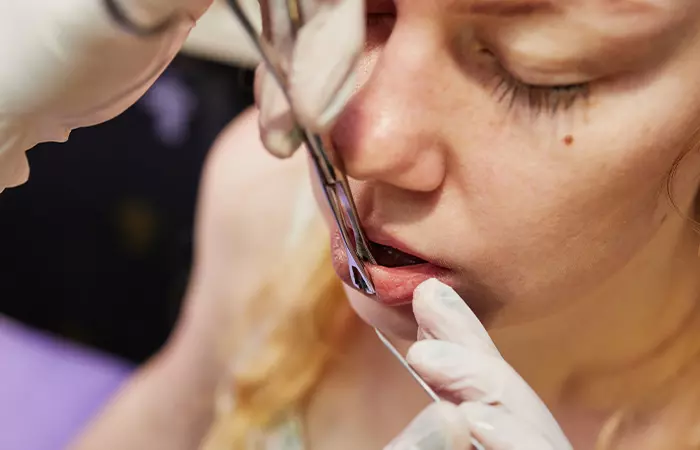
The pain experienced during any labret piercing, including a vertical labret piercing, can vary depending on individual pain tolerance and the skill of the piercer. Typically, clients describe it as a brief and manageable discomfort, akin to a sharp pinch or pressure sensation, and often rate it 4 on the pain scale of 1 to 10. The pain level may also be influenced by factors such as the thickness of the lip tissue and the speed of the piercing process. It might elicit more discomfort compared to ear or nose piercings due to the mouth area’s sensitivity and dense nerve endings. Furthermore, the piercing may be more intense than standard lip piercings as it penetrates through thin, delicate lip tissues rather than solely skin and interior mouth tissue. Still, the stunning result outweighs any temporary discomfort. As with any piercing, proper aftercare is essential for minimizing pain and promoting a smooth healing process.
Romy Yang, a YouTuber, describes her experience of getting a vertical labret piercing. She states “It’s going to be five seconds of your life of extreme discomfort. The pain level for me was a six out of ten after my skin got punctured (i).”
Check out the next section to understand how much healing time is required for this piercing.
Key Takeaways
- Vertical labret piercings are a unique and bold form of body modification that adds a touch of edgy appearance to one’s personality.
- This piercing is considered less painful and has a healing period of 6 to 12 weeks.
- Proper aftercare and hygiene practices are essential for ensuring the longevity and health of the piercing, including regular cleaning and monitoring for signs of infection.
Vertical Labret Piercing Healing Time
The vertical labret piercing healing typically ranges from 6 to 12 weeks, although individual healing experiences may vary (1). During this period, the body undergoes a natural process of tissue repair and regeneration around the piercing site. Factors such as proper hygiene practices, lifestyle habits, and overall health can influence the speed and efficacy of this oral piercing’s healing process. It is essential to be patient and attentive to any signs of inflammation or infection during this time, seeking professional assistance if necessary. As the piercing gradually heals, it is crucial to avoid unnecessary trauma or manipulation to promote optimal healing and reduce the risk of complications.
Healing periods can be greatly impacted by factors like personal health, lifestyle decisions, and quality of aftercare measures It can also vary depending on how each person’s body responds. While individual healing responses may lengthen recovery or increase the risk of problems, maintaining a healthy lifestyle and closely following aftercare instructions may encourage faster and more successful healing.
Exploring the duration of the healing process, let us delve into essential aftercare practices, including cleaning guidelines and aftercare practices, to support optimal healing for your vertical labret piercing. Keep scrolling.
Vertical Labret Piercing Aftercare
Vertical labret piercing aftercare is crucial for promoting proper healing and minimizing the risk of complications. Here are some important points to consider (2):
- Clean the piercing site twice daily using a saline solution or a mild, fragrance-free soap and water. Gently remove any crust or debris around the jewelry using a clean cotton swab.
- Refrain from using harsh cleaning products, alcohol-based solutions, or hydrogen peroxide on the piercing, as these can irritate the skin and delay healing.
- Avoid unnecessarily touching or rotating the jewelry, as this can introduce bacteria and disrupt the healing process. If you must touch the piercing, ensure your hands are clean.
- Maintain good oral hygiene by brushing your teeth twice daily and rinsing your mouth with a non-alcoholic, alcohol-free mouthwash after meals to prevent bacterial buildup around the piercing.
- Avoid swimming in pools, hot tubs, or natural bodies of water until the piercing is fully healed to reduce the risk of infection.
- Use a sea salt solution or saline rinse to lessen discomfort and encourage healing around the piercing site. This gentle cleaning technique can get rid of debris and stop bacteria from growing.
- Attend follow-up appointments with your piercer as scheduled to monitor the healing progress and address any concerns promptly.
 Quick Tip
Quick TipBy adhering to these aftercare guidelines, you can promote optimal healing and enjoy your vertical labret piercing with minimal complications. While diligent aftercare ensures proper healing and minimizes risks, exploring the advantages and disadvantages of this piercing style provides valuable insights into its aesthetic appeal and potential challenges. Check out the next section to weigh the benefits and the drawbacks and determine if the vertical labret piercing aligns with your preferences and lifestyle.
Vertical Labret Piercing Pros And Cons

Vertical Labret Piercing Pros
- Unique Aesthetic: The vertical labret piercing offers a distinctive and eye-catching look, adding an element of individuality and style to your appearance.
- Versatile Jewelry Options: With a wide range of jewelry styles available, including studs, hoops, and decorative designs, you can easily customize your vertical labret piercing to suit your taste and preferences.
- Minimal Oral Disruption: Unlike traditional lip piercings that pass through the mouth, the vertical labret piercing avoids contact with oral tissues, reducing the risk of interference with eating, speaking, and dental hygiene.
Vertical Labret Piercing Cons
- Rejection Risk: As with any piercing, there is a risk of rejection, where the body gradually pushes out the jewelry over time (3). This can occur due to improper placement, inadequate aftercare, or individual anatomy.
- Risk Of Infections: The piercing site is susceptible to infections if proper hygiene practices are not followed during the healing process (3). Symptoms may include redness, swelling, pain, and discharge, requiring prompt attention and treatment to prevent complications.
- Potential Dental Issues: While the vertical labret piercing avoids direct contact with teeth, improper jewelry placement or movement can still result in dental damage, such as chipped or cracked teeth (4). Regular check-ups with a dentist are essential to monitor oral health.
 Did You Know?
Did You Know?While weighing the benefits and drawbacks provides valuable insights into the piercing’s aesthetics and potential challenges, understanding the financial investment required allows for a comprehensive assessment of its overall value and helps you make an informed decision that aligns with your preferences and budgetary constraints.
How Much Is A Vertical Labret Piercing?
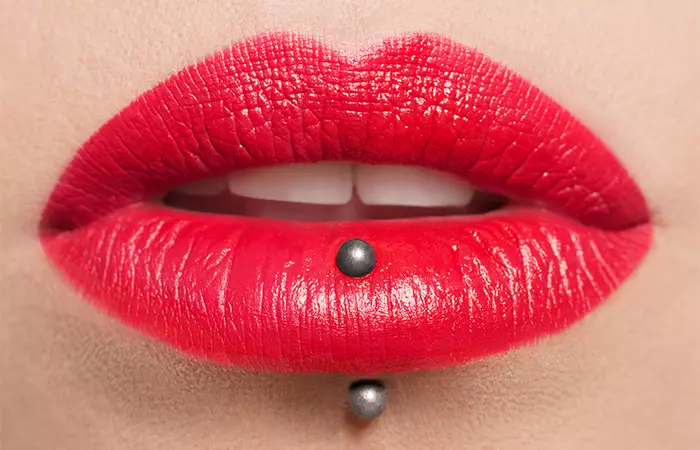
The cost of a vertical labret piercing can vary depending on several factors, including the piercing studio’s location, the expertise of the piercer, the quality of jewelry chosen, and any additional services provided. On average, you can expect to pay between $40 to $100 for the piercing procedure itself. However, this price may increase if you opt for premium jewelry materials or specialized aftercare products. It is essential to prioritize safety and quality when choosing a piercing studio, as investing in a reputable establishment can contribute to a smoother piercing experience and optimal healing outcomes.
Understanding the financial investment involved is crucial for planning purposes, but it is also important to select the right jewelry from the diverse range of jewelry choices for personalization and expression of individual style.
Vertical Labret Piercing Jewelry
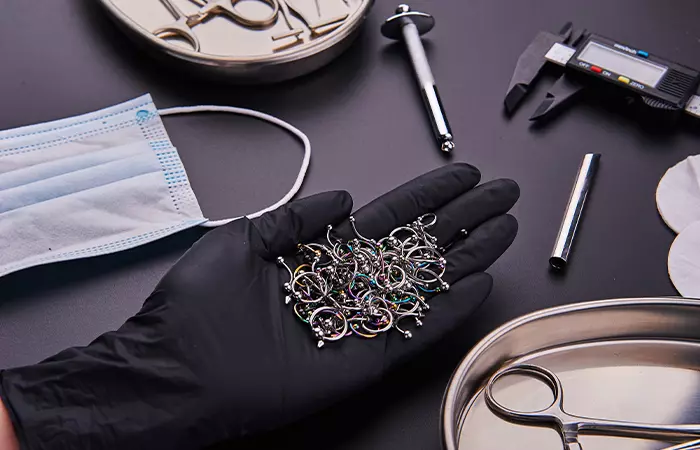
Vertical labret piercing jewelry comes in various styles and materials to suit diverse preferences. Some of the most popular vertical labret jewelry include:
- Labret Studs: A classic choice for vertical labret piercings, available in various sizes and styles, including gemstones, spikes, or plain beads.
- Captive Bead Rings (CBRs): Versatile rings with a captive bead that can be customized with different bead designs for a unique look.
- Curved Barbells: Specially curved barbells that follow the lip’s contour, providing a sleek and comfortable fit.
- Circular Barbells: Similar to captive bead rings but with a circular shape, circular barbells provide a unique aesthetic and can be adorned with various charms or dangles for added flair.
- Labret Retainers: Clear or flesh-toned retainers ideal for concealing the piercing when necessary, perfect for professional settings or events.
Piercing Jewelry Material
For a vertical labret piercing, choosing the right jewelry material is crucial for both comfort and healing. Opting for high-quality, hypoallergenic materials like surgical-grade stainless steel, titanium, or niobium can minimize the risk of allergic reactions and irritation (5). Additionally, considering the unique placement of the vertical labret, jewelry with a flat back or disc-shaped end is recommended to reduce discomfort and prevent gum or tooth damage. Avoiding materials like nickel is essential to prevent adverse reactions and promote successful healing of the piercing. Consulting with a professional piercer for personalized guidance on jewelry selection is always advisable for optimal results.
Selecting the perfect jewelry allows for personalization and expression of individual style, but knowing how to safely and effectively change your vertical labret piercing ensures proper maintenance and care. So check out the next section to know more about it!
How To Change A Vertical Labret Piercing
Changing a vertical labret piercing requires careful attention to ensure a smooth and comfortable transition. Here is a step-by-step guide:
- Wash your hands thoroughly with antibacterial soap to minimize the risk of introducing bacteria to the piercing site.
- If the piercing feels tight or uncomfortable, soak a cotton ball in a warm saline solution and gently apply it to the piercing for a few minutes to soften the area.
- Carefully unscrew or unclasp the current jewelry using clean hands. Be gentle and avoid forcing the jewelry out, as this can cause irritation or injury.
- Align the new jewelry with the piercing hole and gently guide it through. Ensure that the jewelry is securely in place and if required tighten any screws or clasps to ensure the jewelry stays in place.
- After changing the jewelry, clean the piercing site with saline solution or a mild soap to remove any residue or debris.
- Keep an eye on the piercing site for any signs of irritation, infection, or discomfort. If you experience any issues, consult with a professional piercer or healthcare provider for guidance.
By following these steps carefully and patiently, you can safely change your vertical labret piercing and maintain its health and appearance.
Infographic: A Handy Guide To Vertical Labret Piercing
Though a vertical labret piercing is a less popular style, it most definitely has a distinctive appeal, offering an edgy appearance to your look. It lets you make quite the bold statement. But first you need to know some basic details about this piercing, from jewelry choices to aftercare tips. Whether you are a seasoned piercing enthusiast wanting to expand your collection or someone who prefers the uncommon, the below infographic is what you need. Scroll down now!
Illustration: StyleCraze Design Team
A vertical labret piercing is a striking and expressive form of body modification that offers unique aesthetic appearance. From selecting the perfect jewelry to navigating the piercing process and aftercare, embarking on this journey requires careful consideration and attention to detail. Understanding the pros and cons, exploring jewelry options, and mastering the art of changing the piercing helps piercing enthusiasts embrace this bold and edgy style statement. With proper care and maintenance, a vertical labret piercing can be a source of pride and self-expression.
Frequently Asked Questions
What is the difference between vertical labret and Ashley piercing?
The main difference between a vertical labret and an Ashley piercing lies in their placement. A vertical labret piercing exits vertically through the lower lip, while an Ashley piercing enters vertically through the center of the lower lip and exits in the mouth, resembling an upside-down labret.
Who shouldn’t get a vertical lip piercing?
Individuals with sensitive or thin lips or those prone to scarring, may want to avoid a vertical lip piercing, as it can increase the risk of irritation or slow healing. Additionally, individuals with medical conditions that compromise healing, such as diabetes or autoimmune disorders, should consult with a healthcare professional before undergoing the procedure.
Can I use makeup or lip products with a vertical labret piercing?
Yes, you can use makeup and lip products with a vertical labret piercing, but it is important to ensure that they are clean to prevent infection. However, avoid applying products directly to the piercing site or after getting a fresh piercing.
Can I change the jewelry during the healing process?
Avoid changing the jewelry during the healing process of a vertical labret piercing, as this can irritate the area, disrupt healing, and increase the risk of infection. Typically, lip piercings are initially done with longer jewelry to accommodate swelling, and a professional piercer will need to downsize it after 2-4 weeks. After downsizing, leave the jewelry in place until the piercing has fully healed.
Dive into the world of vertical labret piercings! Watch the video below to discover the artistry behind this bold and edgy style statement and explore jewelry options, aftercare tips, and everything you need to know before taking the plunge.
Personal Experience: Source
StyleCraze's articles are interwoven with authentic personal narratives that provide depth and resonance to our content. Below are the sources of the personal accounts referenced in this article.
(i) VERTICAL LABRET 101 | piercing & healing process, how to hide, self-confidencehttps://www.youtube.com/watch?v=nuib48C9MQI
References
Articles on StyleCraze are backed by verified information from peer-reviewed and academic research papers, reputed organizations, research institutions, and medical associations to ensure accuracy and relevance. Read our editorial policy to learn more.
- Body Piercing
https://youngwomenshealth.org/guides/body-piercing/ - Suggested Aftercare Guidelines For Body Piercings
https://safepiercing.org/wp-content/uploads/2025/04/APP_Body-Aftercare_2023.pdf - Complications of body piercing
https://pubmed.ncbi.nlm.nih.gov/16342832/ - Dental and periodontal complications of lip and tongue piercing: prevalence and influencing factors
https://pubmed.ncbi.nlm.nih.gov/22369561/ - Jewelry For Initial Piercings
https://safepiercing.org/jewelry-for-initial-piercings/
Read full bio of J’son D’souza
Read full bio of Sangita Goel
Read full bio of Asmita De
Read full bio of Vaishali Sinha





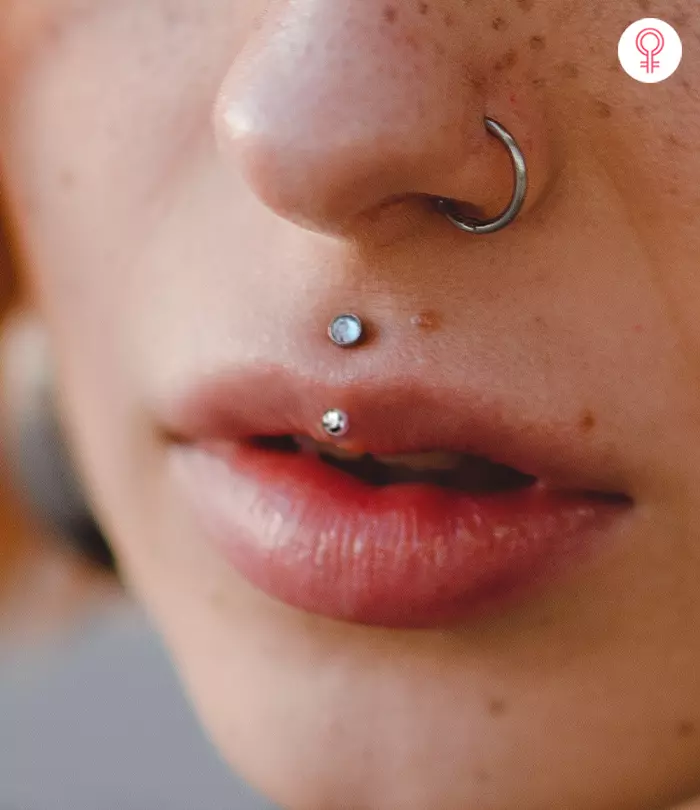



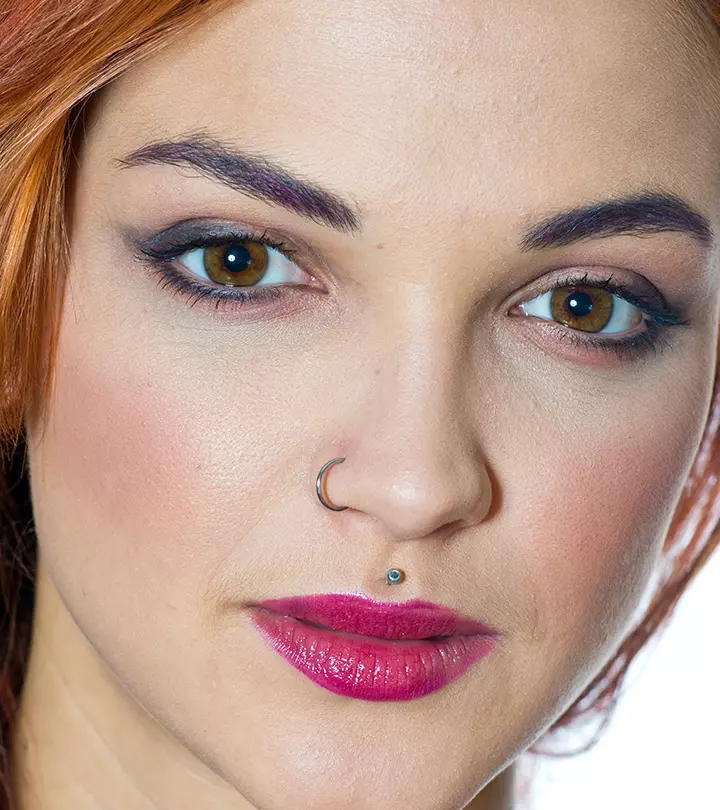
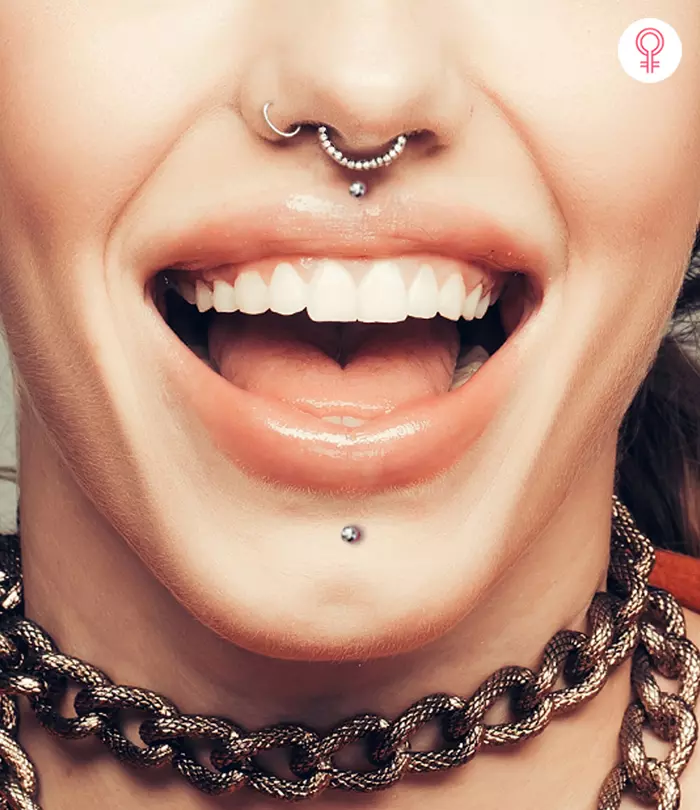
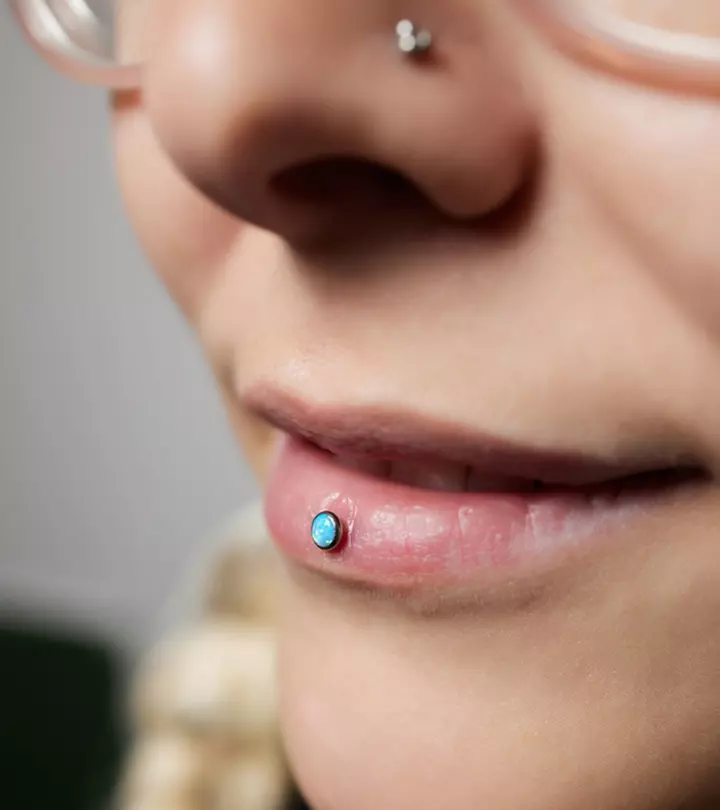

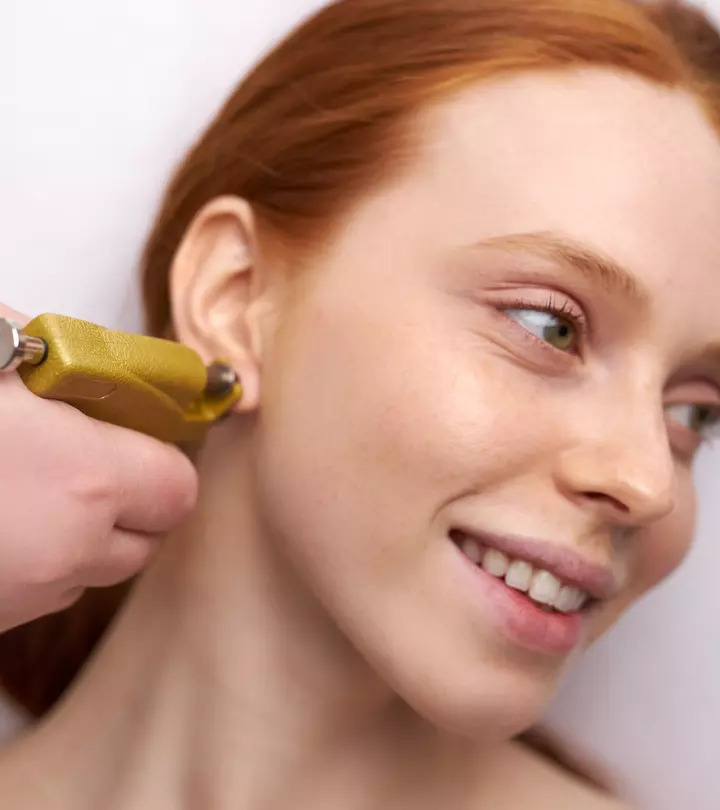
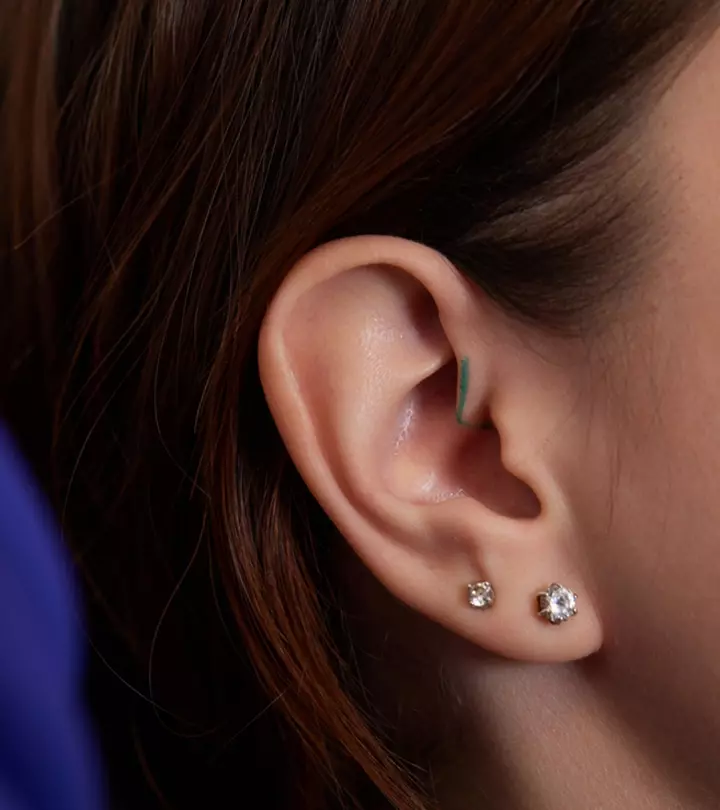

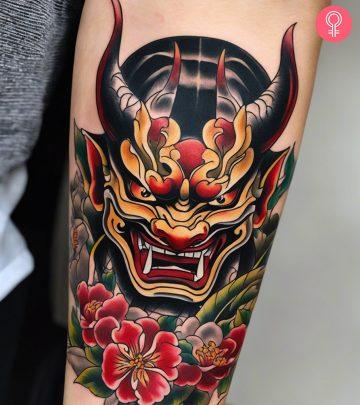









Community Experiences
Join the conversation and become a part of our empowering community! Share your stories, experiences, and insights to connect with other beauty, lifestyle, and health enthusiasts.